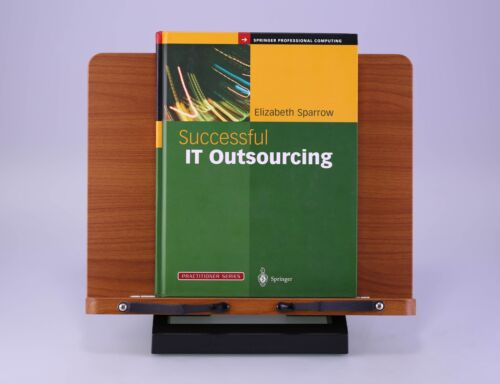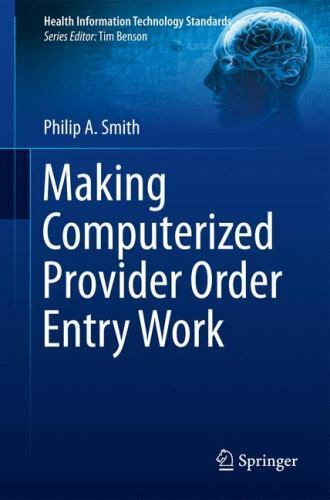Your cart is currently empty!
Tag: Provider

How to Choose the Right Managed Service Provider for Your Business
In today’s fast-paced business environment, it’s crucial for companies to stay competitive and efficient in order to thrive. One way to achieve this is by partnering with a managed service provider (MSP) to handle important IT functions. However, with so many MSPs in the market, it can be overwhelming to choose the right one for your business. Here are some key factors to consider when selecting the right MSP for your company:1. Assess your needs: Before you start looking for an MSP, it’s important to assess your business needs and determine what services you require. This could include network monitoring, data backup and recovery, cybersecurity, cloud services, and more. Understanding your specific requirements will help you narrow down your options and find an MSP that can meet your needs.
2. Reputation and experience: When choosing an MSP, it’s important to look for a provider with a strong reputation and extensive experience in the industry. Check references and reviews from other clients to ensure that the MSP has a track record of delivering high-quality services. Additionally, look for certifications and partnerships with leading technology vendors to ensure that the MSP is up-to-date with the latest industry standards and technologies.
3. Security measures: Data security is a top priority for businesses of all sizes, so it’s crucial to choose an MSP that prioritizes security. Look for an MSP that has robust security measures in place, such as encryption, firewalls, and intrusion detection systems. Additionally, ask about their data backup and recovery procedures to ensure that your data is protected in case of a breach or disaster.
4. Scalability and flexibility: As your business grows and evolves, your IT needs will also change. Choose an MSP that can scale their services to meet your growing needs and provide flexibility to adapt to changes in your business. A good MSP should be able to offer customizable solutions and support for a wide range of technologies to accommodate your unique requirements.
5. Service level agreements (SLAs): Before signing a contract with an MSP, make sure to review their service level agreements (SLAs) carefully. SLAs outline the terms of the agreement, including the scope of services, response times, and performance metrics. Ensure that the SLAs align with your business goals and expectations to avoid any misunderstandings or issues down the road.
In conclusion, choosing the right managed service provider for your business is a critical decision that can have a significant impact on your company’s success. By considering factors such as your specific needs, reputation and experience, security measures, scalability, and SLAs, you can find an MSP that can deliver high-quality services and support to help your business thrive in today’s competitive market.

The Benefits of Outsourcing IT to a Managed Service Provider
Outsourcing IT services to a Managed Service Provider (MSP) has become an increasingly popular option for businesses of all sizes. By partnering with an MSP, companies can offload the management and maintenance of their IT infrastructure to a team of experts, allowing them to focus on their core business objectives. There are numerous benefits to outsourcing IT to an MSP, including cost savings, access to specialized expertise, improved security, and increased efficiency.One of the primary benefits of outsourcing IT to an MSP is cost savings. By outsourcing IT services, businesses can avoid the significant costs associated with hiring and training in-house IT staff, as well as the expenses of purchasing and maintaining hardware and software. MSPs typically offer flexible pricing models, allowing businesses to pay only for the services they need, when they need them. This can result in substantial cost savings for businesses, especially those with limited IT budgets.
Another key benefit of outsourcing IT to an MSP is access to specialized expertise. MSPs employ teams of highly skilled and experienced IT professionals who have the knowledge and expertise to handle a wide range of IT tasks and challenges. By partnering with an MSP, businesses can tap into this specialized expertise, gaining access to a team of experts who can provide strategic guidance, proactive monitoring, and rapid problem resolution. This can help businesses to improve their overall IT performance and ensure that their systems are running smoothly and efficiently.
Outsourcing IT to an MSP can also help businesses to improve their security posture. MSPs are well-versed in the latest security best practices and technologies, and can help businesses to implement robust security measures to protect their data and systems from cyber threats. MSPs can also provide 24/7 monitoring and threat detection services, helping businesses to identify and respond to security incidents in real-time. By outsourcing IT to an MSP, businesses can enhance their security defenses and reduce the risk of data breaches and other security incidents.
In addition to cost savings, access to specialized expertise, and improved security, outsourcing IT to an MSP can also help businesses to increase their overall efficiency. MSPs can help businesses to streamline their IT operations, automate routine tasks, and optimize their IT infrastructure to improve performance and reliability. By outsourcing IT to an MSP, businesses can free up their internal IT staff to focus on strategic projects and initiatives, while the MSP takes care of day-to-day IT management and maintenance tasks. This can help businesses to operate more efficiently and effectively, driving productivity and profitability.
Overall, outsourcing IT to a Managed Service Provider can offer numerous benefits for businesses, including cost savings, access to specialized expertise, improved security, and increased efficiency. By partnering with an MSP, businesses can offload the management and maintenance of their IT infrastructure to a team of experts, allowing them to focus on their core business objectives and drive growth and success. If you are considering outsourcing your IT services, partnering with an MSP could be a smart choice for your business.

What to Look for in a Managed Service Provider
In today’s fast-paced business environment, companies are increasingly turning to managed service providers (MSPs) to handle their IT needs. Whether it’s managing cybersecurity, cloud services, or network infrastructure, MSPs offer a range of services that can help businesses stay competitive and secure in the digital age. However, with so many options available, it can be overwhelming to choose the right provider for your specific needs. Here are some key factors to consider when looking for an MSP:1. Industry Experience: When selecting an MSP, it’s important to choose a provider that has experience working with companies in your industry. Look for MSPs that have a track record of success in your specific sector, as they will have a better understanding of the unique challenges and requirements that your business faces.
2. Service Offerings: Before selecting an MSP, it’s crucial to understand the range of services they offer. Some providers may specialize in certain areas, such as cybersecurity or cloud services, while others may offer a more comprehensive suite of IT solutions. Make sure the MSP you choose can meet your current needs and scale with your business as it grows.
3. Security Measures: Data security is a top priority for businesses of all sizes, so it’s essential to choose an MSP that takes security seriously. Look for providers that have robust cybersecurity measures in place, such as encryption, firewalls, and monitoring tools. Additionally, inquire about their disaster recovery and backup processes to ensure your data is protected in case of a breach or outage.
4. SLAs and Support: Service level agreements (SLAs) are essential in ensuring that your MSP meets your expectations for uptime, response times, and resolution of issues. Make sure to review the SLAs offered by potential providers and choose one that aligns with your business needs. Additionally, consider the level of support provided by the MSP, including 24/7 monitoring, helpdesk services, and on-site support if needed.
5. Scalability and Flexibility: As your business grows, your IT needs will evolve as well. Choose an MSP that can scale their services to meet your changing requirements. Look for providers that offer flexible pricing plans and customizable solutions, so you can adapt your IT services as needed without incurring additional costs.
6. Reputation and References: Before making a decision, it’s essential to research the reputation of potential MSPs. Look for reviews and testimonials from current and former clients, and ask for references to get a better understanding of the provider’s track record. Additionally, consider the MSP’s certifications and partnerships, as these can be indicators of their expertise and credibility.
In conclusion, choosing the right managed service provider is a critical decision for any business looking to outsource their IT needs. By considering factors such as industry experience, service offerings, security measures, SLAs, scalability, and reputation, you can find an MSP that meets your specific requirements and helps your business thrive in the digital age.

Successful IT Outsourcing: From Choosing a Provider to by Elizabeth Sparrow

Successful IT Outsourcing: From Choosing a Provider to by Elizabeth Sparrow
Price : 19.95
Ends on : N/A
View on eBay
Successful IT Outsourcing: From Choosing a Provider to Maximizing ResultsOutsourcing IT services has become a common practice for many businesses looking to streamline operations, cut costs, and access specialized expertise. However, finding the right IT outsourcing provider and ensuring a successful partnership requires careful planning and consideration.
Here are some key steps to consider when outsourcing IT services:
1. Define Your Goals and Requirements: Before outsourcing any IT services, it’s essential to clearly define your goals, requirements, and expectations. This will help you identify the specific services you need and ensure that the provider you choose can meet your needs.
2. Research and Evaluate Potential Providers: Take the time to research and evaluate potential IT outsourcing providers. Look for providers with experience in your industry, a strong track record of success, and positive client testimonials. Consider factors such as pricing, service offerings, and scalability.
3. Conduct Due Diligence: Before signing any contracts, it’s crucial to conduct due diligence on your chosen provider. This may include reviewing their credentials, conducting background checks, and analyzing their financial stability. Make sure to ask for references and speak to current or former clients to get a better sense of the provider’s capabilities.
4. Establish Clear Communication: Communication is key to a successful outsourcing partnership. Establish clear lines of communication with your provider, including regular check-ins, reporting mechanisms, and escalation procedures in case issues arise. Make sure to set expectations upfront and maintain open and transparent communication throughout the partnership.
5. Monitor and Measure Performance: Once you’ve selected an IT outsourcing provider, it’s essential to monitor and measure their performance regularly. Track key performance indicators (KPIs) to ensure that the provider is meeting your expectations and delivering on their promises. Address any issues or concerns promptly to avoid any potential disruptions to your business operations.
By following these steps and choosing the right IT outsourcing provider, you can maximize the benefits of outsourcing and achieve success in your IT initiatives. Remember, outsourcing is a strategic decision that can help your business grow and thrive, so take the time to select the right partner and set yourself up for success.
#Successful #Outsourcing #Choosing #Provider #Elizabeth #Sparrow
Abbott Pain Management Provider Infusion Pump SERVICE REPAIR MANUAL

Abbott Pain Management Provider Infusion Pump SERVICE REPAIR MANUAL
Price : 13.02
Ends on : N/A
View on eBay
Are you in need of a service repair manual for your Abbott Pain Management Provider Infusion Pump? Look no further! This comprehensive manual will provide you with all the information you need to properly maintain and repair your infusion pump.From troubleshooting common issues to detailed instructions on how to disassemble and reassemble your pump, this manual has got you covered. Don’t let a malfunctioning pump disrupt your pain management treatment – arm yourself with the knowledge you need to keep your pump in top working condition.
Contact us today to get your hands on the Abbott Pain Management Provider Infusion Pump Service Repair Manual and ensure that your pump continues to deliver reliable and effective pain relief.
#Abbott #Pain #Management #Provider #Infusion #Pump #SERVICE #REPAIR #MANUAL
Choosing the Right Data Center Repair Services: Tips for Finding a Reliable Provider
Data centers are the backbone of modern businesses, storing and managing large amounts of critical data that are essential for operations. Therefore, when a data center experiences issues or downtime, it can result in significant disruptions and financial losses for a company. This is why it is crucial to choose the right data center repair services to ensure that your data center is up and running smoothly at all times.Here are some tips for finding a reliable provider for data center repair services:
1. Experience and expertise: When choosing a data center repair service provider, look for a company with a proven track record of successfully repairing data centers. The technicians should have the necessary expertise and experience in working with various types of data center equipment and technologies.
2. 24/7 support: Data center issues can occur at any time, day or night, so it is important to choose a repair service provider that offers 24/7 support. This ensures that your data center can be quickly repaired and brought back online, minimizing downtime and potential losses for your business.
3. Response time: Time is of the essence when it comes to data center repairs, so choose a provider that offers fast response times. Look for a company that guarantees a quick turnaround time for repairs and has a team of technicians on standby to address any issues promptly.
4. Quality of service: When it comes to data center repair services, quality is key. Choose a provider that uses high-quality parts and equipment for repairs and follows best practices in data center maintenance and repair. A reliable provider will ensure that your data center is repaired properly and will not experience the same issues again in the future.
5. Reputation and reviews: Before choosing a data center repair service provider, do some research on their reputation and read reviews from other customers. Look for a company with positive feedback and testimonials from satisfied clients, as this is a good indicator of their reliability and professionalism.
6. Cost-effective solutions: While it is important to choose a reliable data center repair service provider, it is also essential to consider the cost of their services. Look for a company that offers competitive rates and cost-effective solutions for data center repairs, without compromising on quality.
By following these tips, you can find a reliable provider for data center repair services that will ensure your data center is well-maintained and running smoothly at all times. Investing in the right repair services will help you avoid costly downtime and keep your business operations running smoothly.

Top Trends in Managed Service Provider Solutions
Managed service providers (MSPs) have become an essential part of businesses’ IT strategies, providing a wide range of services to help organizations manage their technology infrastructure efficiently. As technology continues to evolve rapidly, MSPs are constantly adapting to new trends and innovations to meet the changing needs of their clients.Here are some of the top trends in managed service provider solutions that are shaping the industry in 2021 and beyond:
1. Cloud Computing: Cloud computing has become the backbone of many businesses’ IT infrastructure, allowing organizations to access resources and services on-demand. MSPs are increasingly offering cloud services to help businesses migrate their data and applications to the cloud, providing scalability, flexibility, and cost savings.
2. Cybersecurity: With the rise of cyber threats and data breaches, cybersecurity has become a top priority for businesses of all sizes. MSPs are offering comprehensive cybersecurity solutions, including threat detection, incident response, and compliance management, to help organizations protect their sensitive data and prevent security breaches.
3. Artificial Intelligence and Machine Learning: AI and machine learning technologies are revolutionizing the way businesses manage their IT infrastructure. MSPs are leveraging these technologies to automate routine tasks, identify patterns and anomalies in data, and improve decision-making processes for their clients.
4. Internet of Things (IoT): The proliferation of IoT devices in the workplace has created new challenges for businesses in terms of managing and securing these devices. MSPs are offering IoT management solutions to help organizations monitor, track, and secure their IoT devices, ensuring that they operate efficiently and securely.
5. Remote Work Solutions: The shift to remote work in response to the COVID-19 pandemic has accelerated the demand for remote work solutions. MSPs are providing remote work solutions, including virtual desktop infrastructure (VDI), video conferencing, and collaboration tools, to help businesses enable their employees to work remotely effectively.
6. Managed Backup and Disaster Recovery: Data loss can have devastating consequences for businesses, making backup and disaster recovery solutions essential. MSPs are offering managed backup and disaster recovery services to help businesses protect their data, minimize downtime, and recover quickly from disasters.
7. Compliance and Regulatory Requirements: Businesses are increasingly subject to strict compliance and regulatory requirements, particularly in industries such as healthcare and finance. MSPs are helping organizations navigate these requirements by providing compliance management services, ensuring that they meet legal and regulatory obligations.
In conclusion, managed service provider solutions are evolving to meet the changing needs of businesses in a rapidly evolving technological landscape. By staying abreast of these top trends, MSPs can continue to provide valuable services to their clients and help them navigate the complexities of modern IT infrastructure.

Tips for Choosing the Right Cloud Computing Provider
Cloud computing has become an essential technology for businesses of all sizes. By storing and accessing data and applications over the internet, cloud computing allows businesses to streamline their operations, enhance collaboration, and reduce costs. However, with so many cloud computing providers on the market, choosing the right one for your business can be a daunting task. Here are some tips to help you make the right decision:1. Understand your needs: Before you start looking for a cloud computing provider, it’s important to understand your business’s specific needs. Consider factors such as the size of your business, the type of data and applications you need to store and access, and your budget. This will help you narrow down your options and choose a provider that can meet your specific requirements.
2. Consider security: Security is one of the most important factors to consider when choosing a cloud computing provider. Make sure the provider you choose has strong security measures in place to protect your data from cyber threats. Look for providers that offer encryption, data backup, and regular security audits to ensure the safety of your data.
3. Evaluate reliability: Downtime can be costly for businesses, so it’s important to choose a cloud computing provider that offers reliable service. Look for providers that guarantee a high uptime percentage and have a reputation for reliable service. Additionally, consider the provider’s data centers and infrastructure to ensure they have the capacity to handle your business’s needs.
4. Compare pricing: Pricing is another important factor to consider when choosing a cloud computing provider. Compare the pricing plans of different providers to find one that fits your budget. Keep in mind that some providers may offer additional features or services for an extra cost, so make sure to carefully review the pricing details before making a decision.
5. Consider scalability: As your business grows, your cloud computing needs may change. Choose a provider that offers scalability, so you can easily expand your storage and computing resources as needed. Look for providers that offer flexible pricing plans and the ability to quickly scale up or down based on your business’s needs.
6. Read reviews: Before choosing a cloud computing provider, take the time to read reviews and testimonials from other customers. This will give you insights into the provider’s reputation, customer service, and overall satisfaction levels. Look for providers with positive reviews and a track record of delivering quality service.
By following these tips, you can choose the right cloud computing provider for your business and take advantage of the many benefits that cloud technology has to offer. With the right provider, you can streamline your operations, enhance collaboration, and drive business growth.

Choosing the Right IT Solutions Provider for Your Company
When it comes to running a successful business in today’s digital age, having the right IT solutions provider is crucial. From managing network security to implementing cloud services, IT plays a vital role in the day-to-day operations of any company. With so many options available, choosing the right IT solutions provider for your company can be a daunting task. Here are some key factors to consider when selecting a provider that meets your company’s needs:1. Assess Your Company’s Needs:
Before you start looking for an IT solutions provider, it’s important to assess your company’s specific IT needs. Consider what services you require, such as network security, data backup, cloud services, or help desk support. By understanding your company’s needs, you can narrow down your search to providers that offer the services you require.
2. Experience and Expertise:
When choosing an IT solutions provider, look for a company with a proven track record of success. Experience and expertise are crucial when it comes to managing IT systems and ensuring they run smoothly. A provider with years of experience and a team of knowledgeable experts will be better equipped to handle any IT challenges that may arise.
3. Reputation and Reviews:
Before making a decision, do some research on potential IT solutions providers. Look for reviews and testimonials from other clients to get an idea of the company’s reputation. A provider with positive reviews and satisfied clients is more likely to deliver quality services and support for your company.
4. Customized Solutions:
Every company has unique IT needs, so it’s important to choose a provider that offers customized solutions. Look for a provider that takes the time to understand your company’s specific requirements and tailors their services to meet your needs. A one-size-fits-all approach may not be the best option for your company’s IT infrastructure.
5. Security and Compliance:
With cyber threats on the rise, security is a top priority for any company. When choosing an IT solutions provider, make sure they have a strong focus on security and compliance. Look for providers that offer robust security measures, regular security audits, and compliance with industry regulations to protect your company’s data and systems.
6. Scalability and Flexibility:
As your company grows, your IT needs will also evolve. Choose an IT solutions provider that offers scalable and flexible services to accommodate your company’s changing requirements. Whether you need to add new users, upgrade your systems, or implement new technologies, a provider that can scale with your company will be a valuable partner in the long run.
Choosing the right IT solutions provider for your company is a critical decision that can have a significant impact on your business’s success. By considering factors such as experience, reputation, customized solutions, security, scalability, and flexibility, you can find a provider that meets your company’s IT needs and helps you achieve your business goals.

Making Computerized Provider Order Entry Work (Health Information Technology Sta

Making Computerized Provider Order Entry Work (Health Information Technology Sta
Price : 51.28
Ends on : N/A
View on eBay
Making Computerized Provider Order Entry Work (Health Information Technology Strategies)Computerized Provider Order Entry (CPOE) is a critical component of health information technology that can improve patient safety, efficiency, and quality of care. However, implementing and optimizing CPOE systems can be challenging for healthcare organizations.
Here are some strategies to make CPOE work effectively in healthcare settings:
1. Engage stakeholders: Involve healthcare providers, IT staff, nurses, pharmacists, and other key stakeholders in the design and implementation of CPOE systems. Their input and feedback are crucial to ensure the system meets the needs of all users.
2. Provide training: Offer comprehensive training for healthcare providers and staff on how to use the CPOE system effectively. This can help reduce errors and improve adoption rates.
3. Customize workflows: Tailor the CPOE system to match the existing workflows and processes in your organization. This can help minimize disruptions and ensure a smooth transition to the new system.
4. Monitor and measure outcomes: Track key performance indicators such as medication errors, order turnaround times, and provider satisfaction to assess the impact of the CPOE system. Use this data to make continuous improvements.
5. Implement decision support tools: Integrate clinical decision support tools into the CPOE system to provide providers with real-time guidance on best practices, drug interactions, and other relevant information.
By following these strategies, healthcare organizations can successfully implement and optimize CPOE systems to enhance patient care and safety. Remember that effective communication, training, customization, monitoring, and decision support are key factors in making CPOE work in healthcare settings.
#Making #Computerized #Provider #Order #Entry #Work #Health #Information #Technology #Sta
